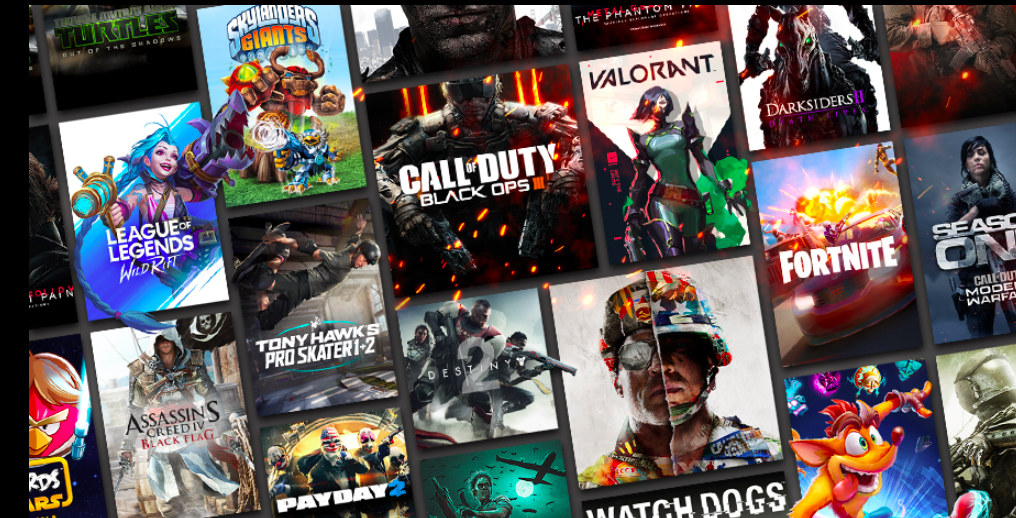
Play On: How Gaming Brands Can Inform a Next-Gen Approach to Advertising

It’s a sector worth more than the global film and North American sports industries combined. It’s a medium whose technology - be it the shared worlds underpinning the metaverse or boundary-pushing AR and VR - is increasingly defining the way we live. As video games become ever-more popular and culturally relevant, it’s worth asking: what can brands learn from the way games market themselves?
Before answering, we should understand the ways in which the games industry is unique. Any product category has its own habits and unspoken visual language; no-one could possibly own as many white shirts as we see on laundry detergent ads, for example. But you can be sure that when you see a pristine polo or a pure-white pullover, you’re watching a Ti - ahem - an unnamed detergent brand’s ad. In that respect, the world of gaming is no different.
A Listening-First Approach
Underpinning the games industry is a formulaic approach which is typically built around a mixture of reveals, cinematic trailers, and gameplay footage. Those reveals will typically come off the back of a big industry event such as E3 in June, or perhaps Gamescom later in the year. As a result, there’s a tangible structure and rhythm to the way the industry markets itself. Perhaps that’s less the case now that games are more of an ever-evolving product with near-constant live updates, but the industry calendar is nonetheless punctuated by big events.
For gaming brands, that traditional structure can be a blessing and a curse - while you have an amazingly engaged and passionate audience, it can also be a challenge to break through the summer’s wall of announcement noise. So gaming brands have always had to be great at social listening - and it’s one of the first categories to really focus on community management. As a result, there’s an understanding that the consumer is in control and must proactively choose to engage with a game - and will at varying levels of interest, loyalty and advocacy.
Gaming brands face the challenge of defining their path through a densely populated, competitive global market to reach an incredibly broad demographic of often socially savvy, self-educating, and vocal consumers. The choices these brands make, particularly in how they continue to nurture their audiences post-purchase, is something other brands should note.
Channelling Consumer Passion
The industry’s level of consumer passion also feeds into another unique phenomenon. I’m talking about what we could describe as ‘surprise hits’. Would anyone have expected, for example, that Minecraft - a low-fi game essentially about placing blocks on top of one another - would sell an estimated 238 million copies and become the second best selling game of all time? It’s got some way to go, however, to match 500 million-strong sales of Tetris (another game about stacking blocks). For all the beautifully smooth modern graphics and silky animations, then, maybe all gamers truly want is the humble cube?
Reality is, of course, more complicated than that. Making a hit is a phenomenally tricky business no matter your budget, and if there were a reliable path to success then every game developer would surely be churning out commercial hit after commercial hit.
That’s another way, then, in which gaming does mirror the marketing industry at large: despite the sector’s deeply embedded structure and cultural expectations, there’s no copy-and-paste approach to a successful campaign.
We’re All Playing The Game
Historically, many have viewed gaming as a kind of subculture so unique that its rules couldn’t apply beyond the industry’s borders. In 2021, that’s demonstrably not the case.
Though it’s still true that gaming has a particular culture and style, it’s now becoming so ubiquitous that it has spread into the mainstream and beyond. Whether it be the 55 year-old idly loading up Candy Crush to while away their commute or the 14 year-old blasting through another round of Fortnite, gaming has its tentacles in so many aspects of our lives. Maybe one of the best things brands could learn from gaming, then, is to make no assumptions about your audience. Just as the culture of the movies permeates well beyond the silver screen, the culture of gaming has achieved the same thing.
So, how could brands and marketers respond? Well, partnerships with gaming brands have been commonplace for some time. These range from the surprising (I’m still not over watching Mario himself driving an actual Mercedes) to the staggeringly genius (one could argue that Travis Scott’s famous appearance in Fortnite is an example of a brand partnership with the game). More than a linear visibility-grab for brands, partnering with games now provides a platform on which to genuinely move the cultural needle. A more recent example than Travis Scott would be the Gucci Garden on Roblox. These are all ways in which brands can be part of worlds that people actually choose to experience in their free time. Isn’t that better than churning out another six-second ad that your audience just wants to skip past?
The Psychology Of Games
But the extent to which gaming has become a part of modern psychology is far from limited to the virtual worlds of games alone. Gaming is no longer the subculture many used to see it as - it’s not in the shadows anymore. Social media, the prism through which billions of us perceive and experience the real world, is immensely game-ified in its design. That dopamine hit you receive when someone likes or shares your post is the same chemical your brain generates when Mario grabs the coin, or you make the killer pass, or hit the elusive target.
In 2021, the logic and design which underpins great video games can be applied universally. No matter what sector your brand is part of, you should know that large segments of your audience understand and respond to game-ified experiences. Many brands already understand this - Burberry, for example, last year released its first video game designed by its own in-house development team.
Playing To Win
Make no mistake, this culture has staying power. Those people who grew up playing the games they received at Christmas and birthdays now have kids of their own, and the appetite for video games is showing no signs of slowing down as it passes through the generations.
Across the ecosystem of games, there are of course examples of good and bad marketing practices - but generally, game entities that prosper tend to think about things from the players’ perspectives and commit to that to a far greater extent than comparable brands in other categories. There’s every reason to think that those success stories could apply beyond the realm of gaming: advertising is modelled on audiences, and the audience for gaming is growing by the day. That means it’s aging and existing as part of mainstream culture.
So, it’s true what they say: life’s a game. And we’re all players now.
Stacia Grooby and Tom Chapman are client directors at Five by Five.













